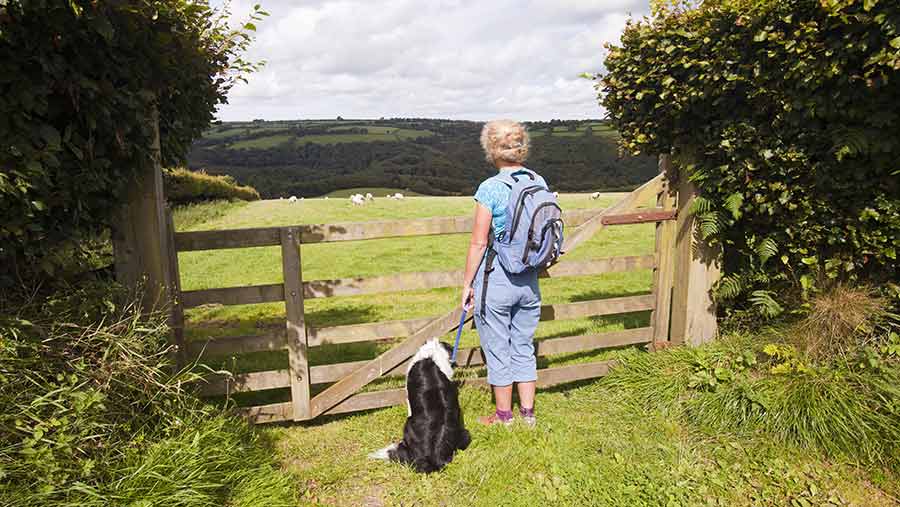Dogs present in two-thirds of cattle attacks, study finds
 © Global Warming Images/REX Shutterstock
© Global Warming Images/REX Shutterstock The NFU has urged farmers to continue to engage with dog walkers after a study found almost two-thirds of reported cattle attacks on the public involved the pet.
Seeking to identify the risk factors behind cattle attacks, researchers from the University of Liverpool reviewed press reports of “negative interactions” between cows and members of the public from January 1993 to 31 May 2013.
They identified 54 cattle attacks, including one that involved former home secretary David Blunkett.
Of these, 13 resulted in walker deaths. Injuries – caused by kicking, crushing, head-butting and trampling – included fractures, lacerations, a punctured lung, bruising, black eyes, dislocated joints, nerve damage and unconsciousness.
Of the 54 incidents identified, 35 (64.8%) involved a dog, while just four (7.4%) involved none.
See also: Frustrated farmer issues ultimatum to dog walkers
“We found that walking with dogs among cows, particularly with calves present, was a common factor for an attack,” said lead author, Dr Carri Westgarth, a dog behaviour expert at the University of Liverpool’s Institute of Infection and Global Health.
“One theory for this is that the cows may feel particularly threatened by dogs, especially if they have young to protect. People then try to protect their dogs, which can lead to a tragic incident occurring.”
Charles Sercombe, the NFU livestock board chairman, told Farmers Weekly he is “not surprised” by the findings of the study.
“When looking into these incidents it is often a dog that has caused an initial reaction from the cattle,” he says.
Guidance
Published literature and online guidance on walking near cattle was also reviewed by the University of Liverpool team. Advice on how to behave around cattle was found to vary, particularly concerning the control of dogs.
“Twenty pieces of commonly occurring advice were found within various guidelines,” says the study. “However, there are no definite approved guidelines, no published studies describing the prevalence of cattle attacks on members of the public and no system in place to document them.”
The production of an approved guidance document in leaflet and web form would “facilitate better management of this problem,” it concludes.
See also: Police reveal true extent of dog attacks on sheep
“We’ve done a lot of work to make the public aware of what to do [in this situation],” says Mr Sercombe.
“Based on evidence and experience, our recommendation is to let go of the dog if you feel threatened, and exit the field as quickly and discreetly as possible. We’ve also always taken the line that dogs should be controlled on a lead to prevent an unsavoury incident.”
Farmers also have a responsibility to engage with walkers on the dangers, he says.
“Farmers need to keep engaging with the wider public,” says Mr Sercombe. “We’re already trying to by putting up signs warning walkers there are cattle in the field or that cows are calving.
“If you are grazing cattle, make them aware,” he adds.
